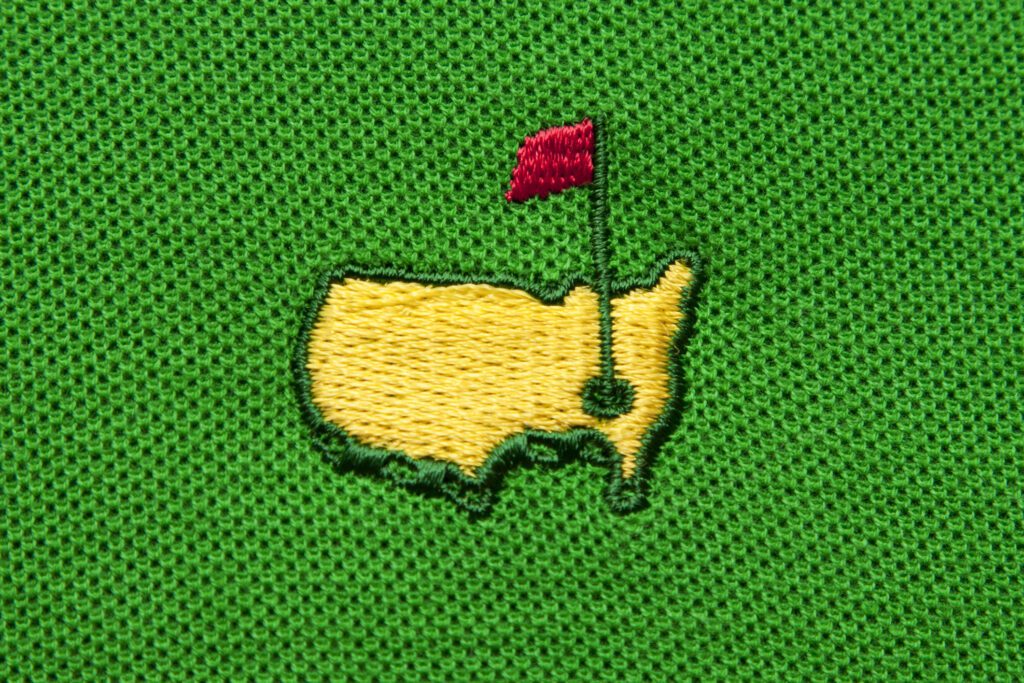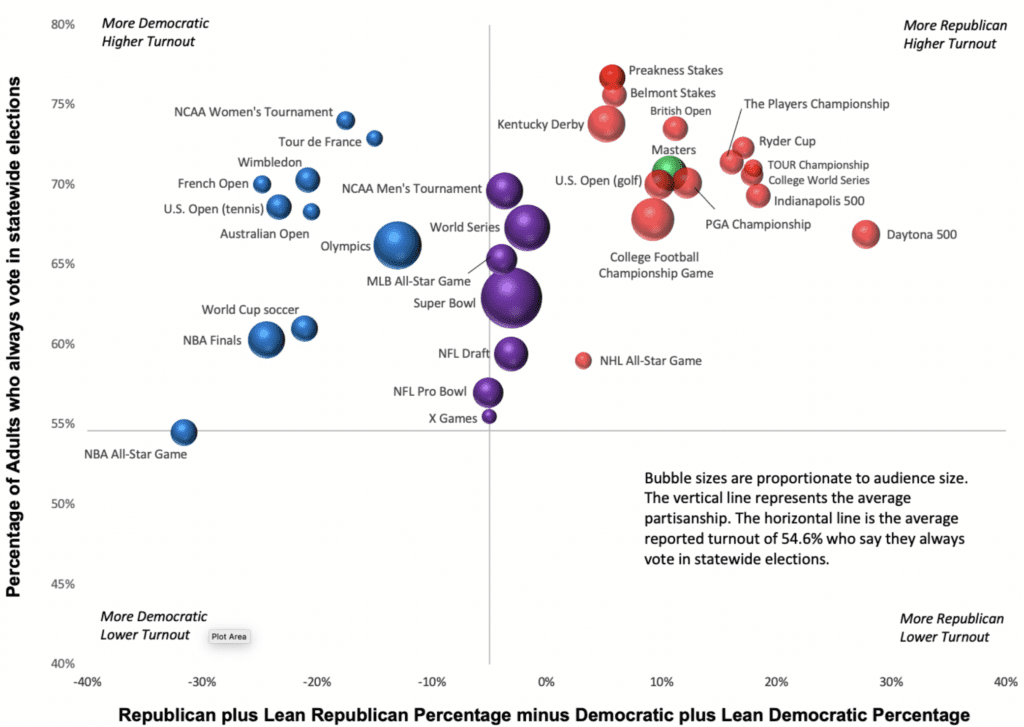What Watching the Masters (and Other Sports) Says About Your Politics


When the world’s top golfers gather in Georgia this week for the Masters, not much will be different from the tournament’s past editions. Patrons won’t be able to carry phones or cameras. Pimento cheese sandwiches will sell for an absurdly low price. The winner will receive the coveted green jacket. And television viewers won’t have to suffer through a single political ad, including Joe Biden’s recent spot attacking Donald Trump’s golf game.
In this regard, the Masters broadcast is truly “a tradition unlike any other” among major sporting events. Commercials are limited to just four minutes each hour split among a handful of corporate sponsors, effectively making the broadcast a politics-free sanctuary. Golf fans of all partisan stripes can agree this is the equivalent of a hole in one.

We’ve been tracking the politics of sports for 20 years by analyzing Nielsen Scarborough data, which includes hundreds of thousands of annual in-depth interviews with American adults. As our bubble chart shows, the Masters’ political ad blackout is a double bogey for GOP campaigns, robbing them of a prime opportunity to reach their high turnout Republican base.
Sports Fans are High-Turnout Voters:
For example, among the Democratic-leaning viewers of the past two NCAA women’s basketball tournaments, 74 percent say they always vote in statewide elections, well above the national average of 55 percent. Basketball, particularly pro basketball, has audiences that skew Democratic. Golf is Republican, tennis is Democratic. Republicans like to watch cars speed around a track while Democrats are more likely to watch soccer players run up and down a pitch. (Source: Authors’ analysis of Nielsen Scarborough USA+ surveys 2022-2023, sample = 401,906 adults 18+)
Marketing the Masters
Today’s Republican-leaning Masters was created by wealthy Southern Democrats during the Depression. In 1933, recently retired superstar golfer Bobby Jones – honored at not one but two New York ticker-tape parades before quitting golf young – was a successful 31-year-old attorney representing Coca-Cola at an elite law firm in his hometown of Atlanta.
Jones, a connoisseur of fine golf clubs across America and abroad, had the previous year realized his ambition to create his ideal golf course. Augusta National was built on former plantation property 140 miles east of Atlanta’s East Lake Golf Club, where Jones grew up, and 190 miles from FDR’s beloved cabin at Warm Springs, Georgia.
Unfortunately for Jones, Augusta was located hundreds of railroad miles south of rich Yankee Republican golfers and their checkbooks. These Northerners could pay the hefty initiation fees and dues necessary to sustain Jones’ vision. He quickly needed to take Augusta National national and publicize his new golfing Shangri-la across the country.
Thus, on March 22, 1934, was born one of sport’s most successful marketing gimmicks: The Masters. An experienced self-promoter, Jones timed his new tournament to catch the national sporting press as they migrated out of Florida at the end of baseball spring training. Reporters jumped off the train in Augusta and wrote stories after enjoying free pimento cheese sandwiches and adult beverages with the great Bobby Jones.
Soon, the Southern Democrat-run club was well funded by Republican money. Jones returned the favor by making serial golfer and soon-to-be Republican President Dwight Eisenhower a member in 1948 while Ike was still Supreme Commander of Allied post-war forces in Europe. Ike’s well publicized Augusta sojourns made golf the game of presidents.
The Masters has grown to become the Kentucky Derby of golf: a high-profile, annual competition watched by a large audience who don’t regularly follow the sport – 12.6 percent of adults say they’ve recently watched the Masters, twice the 6.2 percent true golf fans who say they watch other major golf tournaments. Fort Myers and West Palm Beach, home of another golfing president, are the top two Masters media markets.
The Masters’ preeminence places it above golf’s internal squabble between the PGA and the upstart, Saudi-backed LIV Golf tour. Four of the seven most recent green jacket winners have defected from PGA to LIV, including last year’s champion Jon Rahm. A proposed PGA and LIV merger has created uncertainty, been denounced by families of 9/11 victims, and is the subject of a Congressional investigation. When it comes to a large Saudi investment in the PGA Tour, 41 percent of Americans disapprove and 18 percent approve, according to a recent poll.
Political Ads are Coming to Your Favorite Sports Broadcasts
Viewers of every major sport are both more likely to vote and more likely to watch games and tournaments in real-time than viewers of other program formats. The growth of streaming live sports increases targeting opportunities for campaign ad buys. This high-turnout, high-attention dynamic makes sports programming extremely valuable for political media buyers.
But it comes at a high-dollar cost to cash-strapped campaigns. Consumer marketers already covet live sports and are willing to pay premium prices for ad impressions. During campaign season, political demand drives sports prices even higher. Local stations can expand their newscasts’ ad breaks to accommodate political demand. You can’t do that with live sports, leading Democratic media buyer Danny Jester of GMMB shared with us. TV stations are forced to juggle their sports inventory to get the big political checks without alienating their long-term clients. It’s candidates versus car dealers.
So enjoy this weekend’s politics-free golf while it lasts. For sports fans, it’s going to be a rare sanctuary until Election Day.
Mike Shannon (@mikepshannon) is a partner at the management consulting firm Vianovo in Austin, Texas. Will Feltus (@WillFeltus) and Ben Angle manage GOP political and issue advertising clients at National Media in Alexandria, Virginia. Feltus is co-author of the second edition of Inside Politics, a campaign management textbook from Sage/CQ Press.
